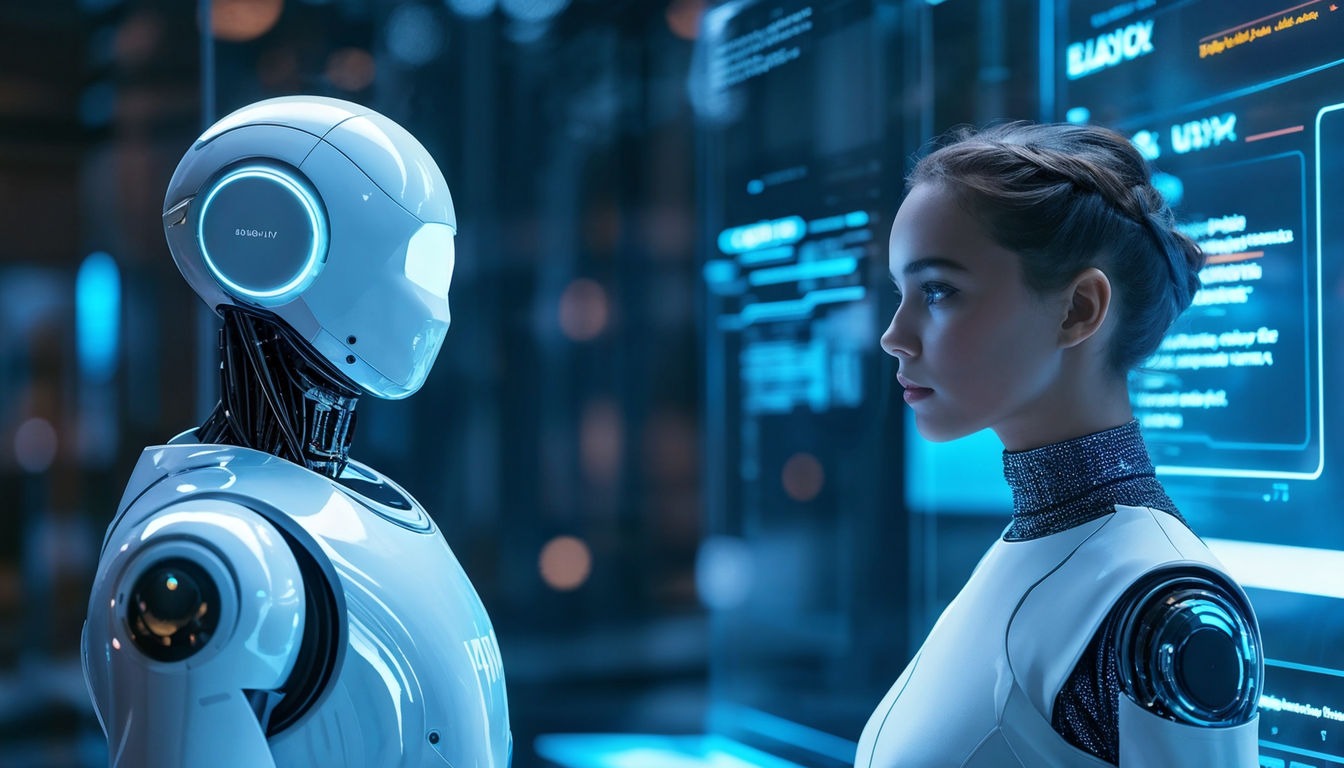Unlock Unmatched User Experience with Hyper-Personalized AI Chatbots in 2024
Introduction: Unlocking the Power of Hyper-Personalized AI Chatbots in Web Apps
In today’s rapidly evolving digital landscape, users expect seamless, intuitive, and personalized experiences. Hyper-personalized AI chatbots have emerged as a game-changing tool that not only enhances user engagement but also improves satisfaction by delivering highly customized interactions. By integrating these AI-driven solutions into your web applications, you can transform the way users interact with your platform, creating a truly immersive and tailored experience.
But how do these hyper-personalized chatbots actually work? And how can developers leverage their full potential? In this article, we’ll explore the core benefits, technical challenges, and best practices for incorporating AI chatbots into your web apps to deliver an unmatched user experience.
The Core Benefits of Hyper-Personalized AI Chatbots
One of the most significant advantages of hyper-personalized AI chatbots is their ability to deliver real-time, customized responses based on user preferences, behaviors, and history. Unlike traditional static chatbots, these intelligent systems continuously learn and adapt, offering a level of personalization that’s almost indistinguishable from human interaction.
- Tailored User Interactions
Personalization starts with understanding user needs. AI chatbots use natural language processing (NLP) and machine learning algorithms to analyze previous interactions, giving them the ability to respond in a way that feels intuitive and customized. Whether it’s answering user queries or providing product recommendations, hyper-personalized AI chatbots can enhance user retention and increase conversion rates. - Scalable and Efficient Customer Support
Another benefit is the scalability they bring to customer service. Instead of having users wait for human assistance, chatbots handle multiple conversations at once, resolving common queries instantly. For developers building e-commerce platforms or customer-centric web apps, chatbots provide real-time assistance while cutting down on operational costs. - Continuous Learning for Greater Accuracy
Hyper-personalized AI chatbots continuously learn from each user interaction. This means the chatbot improves over time, offering more precise responses. When integrated into modern applications, they help deliver predictive experiences, like predicting user questions or providing advanced search functionalities.
How Hyper-Personalization Works in AI Chatbots
To achieve hyper-personalization, chatbots utilize a blend of AI technologies, including machine learning (ML), NLP, and data analytics. These technologies work together to analyze a wealth of user data to create highly personalized experiences.
- NLP and Sentiment Analysis
Natural Language Processing is the backbone of modern chatbots. By analyzing user inputs, AI chatbots can interpret both the context and the sentiment behind each message. For instance, a customer showing frustration in their queries might receive a more empathetic and solution-oriented response. With NLP, chatbots can understand user intent better and respond in a more human-like manner. - Behavioral Data and Contextual Responses
Hyper-personalization also relies on tracking user behaviors, such as browsing patterns, previous conversations, and even purchase history. By collecting this data, chatbots can offer highly relevant recommendations, guide users to the right resources, or suggest specific content. - Learning and Adaptation
Machine learning enables chatbots to continuously improve their performance. As they handle more queries, AI systems refine their algorithms to provide more accurate and helpful answers. For example, a chatbot integrated into a retail website may begin to predict which products to recommend based on user preferences over time.
Best Practices for Integrating Hyper-Personalized Chatbots in Web Apps
Developers looking to integrate hyper-personalized AI chatbots into their web apps must keep several key practices in mind to ensure successful implementation.
- Start with a Clear Objective
Understanding the purpose of your chatbot is critical. Whether you aim to offer enhanced customer service or improve user engagement, defining clear goals will shape how you develop and train your AI model. If your focus is on user experience, prioritize NLP capabilities and sentiment analysis in your chatbot. - Leverage User Data Responsibly
Personalization requires data, but it’s crucial to handle this data responsibly. Ensure that your chatbot complies with all data privacy regulations and provide users with transparency about how their data will be used. Consider integrating privacy-first features like opt-ins for data tracking or anonymization for sensitive information. - Implement Continuous Learning Mechanisms
The success of hyper-personalized AI chatbots depends on their ability to learn. Ensure that your chatbot has mechanisms for continual learning, allowing it to adapt to new behaviors, trends, and user preferences. Over time, this will enable your AI system to evolve, offering even more relevant and efficient interactions.
Challenges in Developing Hyper-Personalized AI Chatbots
While hyper-personalized chatbots offer immense potential, they also come with their own set of challenges, particularly around data management, user trust, and technical complexity.
- Handling Large Volumes of Data
Personalization requires processing vast amounts of data. From user interactions to behavior analysis, this data must be stored, organized, and processed efficiently. Developers should leverage scalable cloud-based storage solutions to handle large data streams while maintaining performance and security standards. - Building Trust with Users
Hyper-personalized experiences can sometimes feel invasive. It’s important to maintain user trust by being transparent about data collection and usage. Offering users control over how their data is used will help in building trust and ensuring continued engagement. - Technical Expertise
Implementing hyper-personalized chatbots involves complex technical challenges. From integrating NLP models to training machine learning algorithms, developers need a robust understanding of AI technologies. Partnering with AI providers or using chatbot frameworks can ease this complexity.
Conclusion: The Future of User Experience Lies in Hyper-Personalization
Hyper-personalized AI chatbots are revolutionizing the way web applications engage users. By delivering tailored experiences, these chatbots are driving higher user satisfaction and boosting retention rates. As AI technology continues to evolve, the possibilities for personalizing interactions will only expand, making it a key trend for developers to embrace.
By implementing best practices and addressing the technical challenges, web developers can unlock the full potential of hyper-personalized chatbots, creating a truly transformative user experience for their audience.
Discover more from Just-CO
Subscribe to get the latest posts sent to your email.




